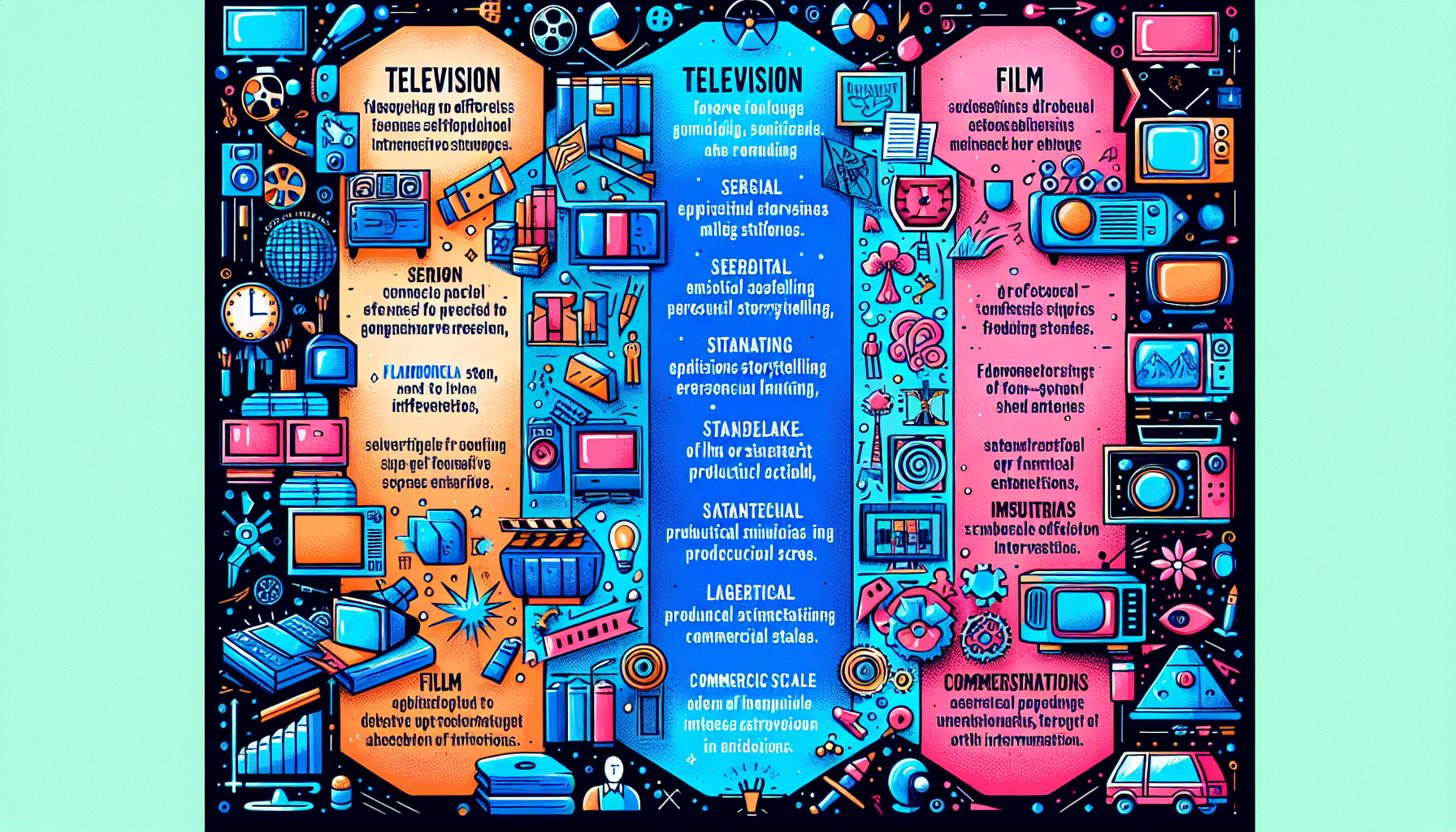- Home
- Screenwriting
- Screenwriting: The Key Differences Between Television and Film

Understanding the Distinct Worlds of Television and Film Screenwriting
The craft of storytelling through screenwriting serves as the backbone of both television and film. However, while both mediums aim to captivate viewers with engaging narratives, they are distinct in their approach, structure, and execution. Understanding these differences is crucial for aspiring screenwriters looking to navigate the nuances of each field. Let’s delve into the key differences between television and film screenwriting.
Narrative Structure
One of the fundamental distinctions between television and film screenwriting lies in narrative structure. Film scripts typically offer a self-contained story, following a three-act structure: setup, confrontation, and resolution. This structure provides a complete narrative arc within a limited timeframe, usually ranging from 90 minutes to 3 hours.
Television scripts, on the other hand, are designed for episodic storytelling. They must accommodate ongoing stories that can develop over multiple episodes or even seasons. This allows for more complex narratives, character development, and subplots. Television episodes may follow their mini-arcs, but they are part of a larger, overarching storyline.
Character Development
The episodic nature of television offers a broader canvas for character development. TV writers have the opportunity to delve deeper into a character’s backstory, motivations, and evolution over time. This extended format encourages viewers to form a long-term emotional connection with the characters.
In contrast, film screenwriters have a shorter duration to establish and develop their characters. They must quickly make the audience care about the characters and their journeys within the limited runtime of a movie. As a result, film characters often undergo significant change or face major revelations by the end of the story.
Writing Process and Collaboration
The process of writing for television often involves a collaborative effort, usually in the form of a writers’ room. This team of writers works together to map out the season, break down episodes, and sometimes even write or revise scripts collaboratively. It’s a dynamic environment where ideas can be bounced around and developed collectively.
Conversely, film screenwriting is commonly a more solitary endeavor. While script revisions might involve input from producers, directors, or script doctors, the initial screenplay is typically the vision of one writer or a writing duo. This can make film writing a more personal and sometimes isolating process.
Production Constraints and Creative Freedom
Television screenwriters often face tighter production schedules and budget constraints compared to film. They have to be mindful of these limitations when crafting their scripts, sometimes adjusting storylines or characters based on production feasibilities.
Film projects, especially bigger studio productions, usually come with larger budgets and longer production timelines. This can afford screenwriters and filmmakers more creative freedom in terms of locations, special effects, and scope of the narrative. However, this is not always the case, as independent films may work within tight budgetary constraints.
Viewer Engagement and Format Flexibility
Television’s episodic format allows for flexible narrative exploration, cliffhangers, and multi-season story arcs that can actively engage viewers over time. The rise of streaming platforms has also introduced binge-watching, encouraging writers to craft stories that are compelling enough to watch in long sessions.
Films, while lacking the luxury of time, rely on immediate viewer engagement. A film must captivate its audience from the beginning and deliver a satisfying conclusion by the end. Nowadays, film franchises and cinematic universes have begun to mimic television’s serialized storytelling, but each film must still stand on its own to some degree.
While television and film screenwriting share the common goal of telling engaging stories, they differ significantly in structure, character development, production constraints, and audience engagement. Understanding these differences can help screenwriters tailor their skills and approach accordingly, depending on the medium they wish to explore.






